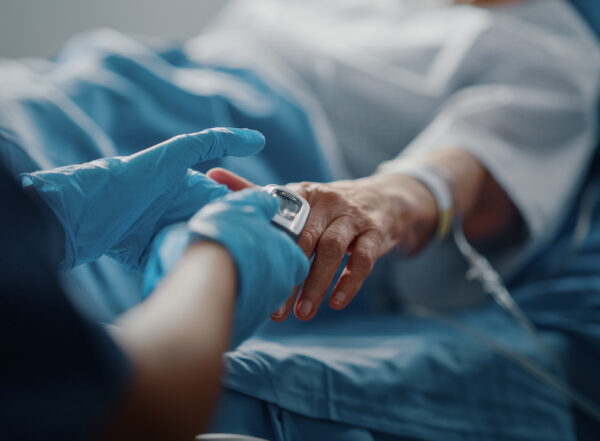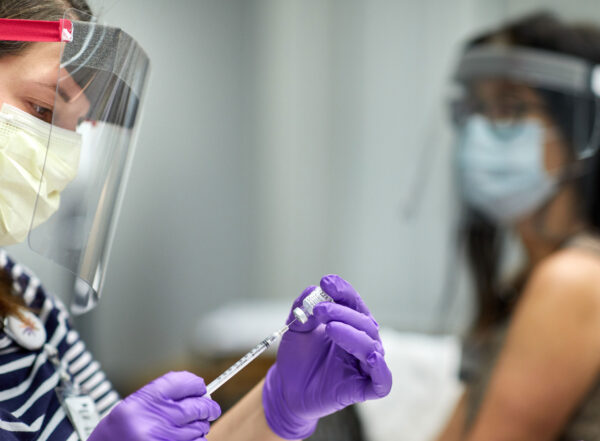Modifying homes for stroke survivors saves lives, extends independence
Clinical trial shows program to help stroke patients supports safe transition home
 Getty Images
Getty ImagesResearchers at Washington University School of Medicine in St. Louis have found that safety interventions – such as walkers, grab bars, ramps and other home modifications – allow many stroke survivors to keep living independently in their homes and may reduce their risk of death.
Every 40 seconds, someone in the United States suffers a stroke, in which blood flow to the brain is blocked. For the survivors, the ensuing brain damage can lead to lifelong disabilities, making mundane tasks, such as using the toilet and taking a shower, risky ventures.
One in eight of those who experience a stroke die within a year of hospital discharge. But a clinical trial led by researchers at Washington University School of Medicine in St. Louis has found that modifications to stroke survivors’ homes – such as grab bars, shower seats, ramps and other safety interventions – reduce the risk of death within a year or so of leaving the hospital and allow many to keep living independently in their homes.
“The transition period is a critical time for stroke survivors who go home after weeks in inpatient rehabilitation,” said senior author Susan Stark, PhD, a professor of occupational therapy, of neurology and of social work. “The home environment looks different and is more challenging than a facility outfitted with accommodations. We have found that occupational therapy can make impactful contributions by creating safe spaces that enable stroke survivors to remain independent and in their own homes.”
The study is available online in Archives of Physical Medicine and Rehabilitation.
The research team tested a novel program in St. Louis in which occupational therapists visited stroke survivors’ homes to identify environmental barriers – such as stairs without handrails, low toilets and dark walkways – and implement accommodations to address their specific needs. The therapists also provided self-management training that involved building problem-solving skills, such as how to connect with accessible transportation.
The severity of the blockage and the speed of treatment delivery affect the recovery process after a stroke. People with minor cognitive and motor impairments typically receive outpatient rehabilitation after leaving the hospital. Severe stroke patients are more likely to be transferred to a skilled nursing facility to receive continuous care and therapy.
But another group, one that includes about 25% of stroke patients, has moderate cognitive and motor impairments. These patients – the focus of the clinical trial – typically leave the hospital for inpatient rehabilitation facilities and have the potential to live independently again, explained Stark.
Life at home looks different for such survivors, however. Pulling a shirt from a drawer challenges muscles weakened by stroke. Using the toilet tests their compromised balance. Climbing stairs may feel like navigating an obstacle course, posing a barrier to socializing and connecting with others.
There’s a high rate of depression with stroke, Stark said. “People become even more depressed when they don’t reengage in their community,” she said.
The clinical trial enrolled 183 individuals age 50 and over, as they transitioned to their homes from inpatient rehabilitation facilities. They were randomly assigned to two groups: one that received at-home modifications and self-management skills, and one that received stroke education prevention during four occupational therapy sessions.
The researchers found that removing barriers and teaching problem-solving skills saved lives.
Compared with the control group, individuals in the intervention group had a higher survival rate; 10 people who received only education died over the course of the study, while no one from the intervention group died. Similarly, those who received the home modifications and self-management training were less likely to transfer to a skilled nursing facility.
Donna C. Jones, EdD, was one of the individuals in the intervention group who benefited from the study. After suffering a stroke in summer 2021, Jones received modifications to her home that put her on a path to recovery, giving her the confidence to function independently while regaining balance and learning new abilities.
“My modified bathroom gives me hope that my life is moving in the right direction,” said Jones, who received her doctoral degree in ethical leadership and employee development just three months before suffering a stroke. “The practical tools and services I received are the foundation of my new journey. I have a new life. It’s very different, and I love it.”
Jones enjoys event planning, travel and community volunteerism. The stroke and a lower right leg amputation a year later have not stopped her from living her life with passion. “Today, I’m finding creative ways to continue the quest of impacting our global society through ethical leadership development, teaching, programs and services. I am grateful for the study that provided the foundation for me to be able to approach my future with a positive outlook.”
Because the small clinical trial focused on a single geographical region, the transition program needs to be tested more broadly, Stark said. She also aims to perform an economic analysis to define the cost savings of implementing home modifications.
“The biggest barrier to implementing this program is getting insurance to reimburse the cost of home modifications,” Stark said. “These interventions are not super expensive, but the system is not in place to cover the cost. If $500 in home modifications keeps people out of the hospital or a skilled nursing facility, that seems like a no-brainer to me. So we are doing the economic analysis to look at the health-care cost savings of such interventions.”







